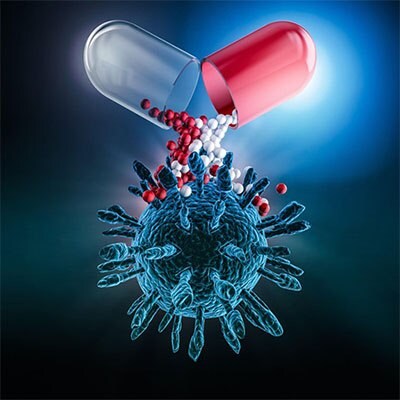Drug Delivery

Drug delivery is the method or process of administering drugs or pharmaceuticals and other xenobiotics to achieve a therapeutic effect in humans or animals. Various drug delivery technologies are utilized to promote therapeutic effects at the intended site of action while minimizing possible adverse effects, by impacting absorption, distribution, metabolism, and elimination (ADME) of a drug compound.
Advances in medicine and biotechnology have led to the development of large number of new drug candidates, many of which fail during pre-clinical evaluation due to limited bioavailability, poor stability and low solubility. Drug delivery systems (DDS) are widely researched and developed to improve the pharmacokinetics and pharmacodynamics of therapeutic agents, to enable them to be delivered at the targeted site in the desired dose at the appropriate time and rate. Novel DDS, such as nano- and micro-particles, transdermal patches, inhalers, drug reservoir implants, and antibody-drug conjugates, are developed to meet advanced therapeutic needs including controlled release, targeted delivery, solubility enhancement, on-demand activation, and new administration routes (e.g., transdermal, ocular, nasal). The appropriate selection of DDS depends on the drug properties, desired release rate, desired site of action, and administration route.
Advances in nanotechnology have greatly improved drug design, enabling targeted, safe and effective drug formulations with nanoparticles (NP). Nanodrug delivery systems have demonstrated great potential in improving the solubility of hydrophobic drugs, enhancing biodistribution and pharmacokinetics, and providing preferential accumulation at the target site.
Nanodelivery systems can be designed to have drugs absorbed or conjugated onto the particle surface, encapsulated in the core, or dissolved within the particle matrix. Drug-loaded nanoparticles can be further targeted to a specific disease site by introducing targeting moieties onto the particle surface. Several nanocarriers such as liposomes, polymer micelles, dendrimers, polymer-drug conjugates, inorganic nanoparticles, and carbon-based nanomaterials have been employed in drug delivery formulation. Liposomes are the most common and well-investigated nanocarriers, while polymer nanoparticles have emerged as one of the most innovative approaches for drug delivery. Both natural and biocompatible synthetic polymers are used to fabricate polymeric drug delivery nanoparticles.
Related Technical Articles
- Polyethylene glycol (PEG), also sometimes referred to as polyethylene oxide (PEO), is a condensation polymer of ethylene oxide and water that has several chemical properties that make it useful for biological, chemical and pharmaceutical applications.
- Find answers to common questions about drug delivery. Review important points about encapsulation efficiency and loading capacity.
- Poly(N-isopropylacrylamide), or PNIPAM, is a stimuli-responsive polymer that responds to changes in pH and temperature and has a LCST around 32 C.
- Find use of RESOMER® biodegradable polymers in medical device applications research.
- Dendrons in nanomaterials - Find features and benefits of polyester dendrons and hyperbranched polymer products.
- See all
Related Protocols
- Watch the below video for instructions on liposome preparation using the Avanti® Mini-Extruder.
- We presents an article regarding Polymer Analysis by NMR.
- Follow this DDT reduction protocol to reduce disulfide bonds in thiol-modified oligonucleotides.
- Watch the video demonstration to learn more about the proper use and care of the Avanti® Mini-Extruder.
- Find study on synthesis of drug unimolecular carriers based on dendritic polyester scaffolds having biomedical applications
- See All
To continue reading please sign in or create an account.
Don't Have An Account?